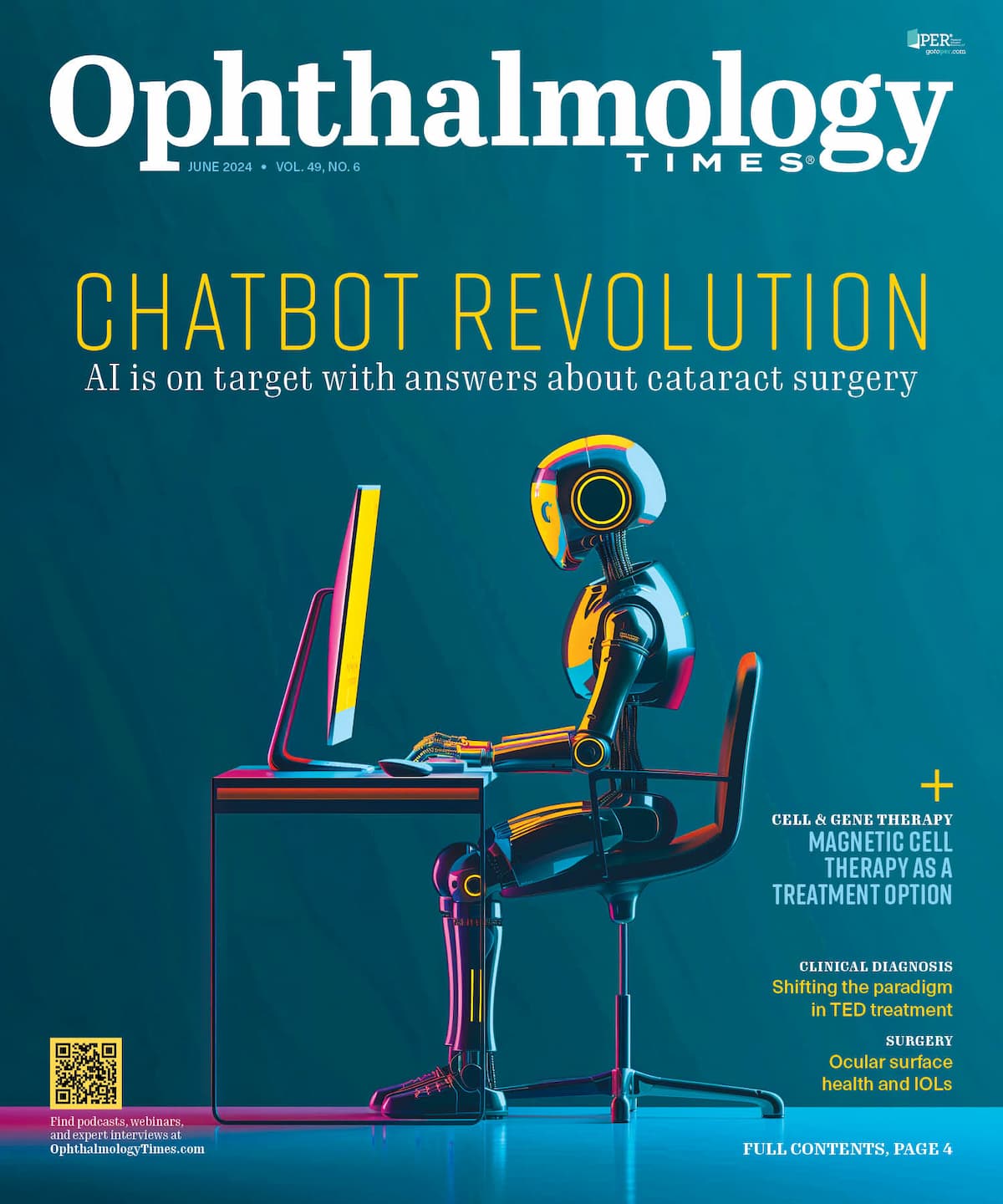Publication
Article
Digital Edition
Everything I thought I knew about thyroid eye disease was only half right
Author(s):
Shift in the understanding of TED has led to a reevaluation of the Rundle curve
(Image Credit: AdobeStock/rufous)

Thyroid eye disease (TED) is an autoimmune, antibody-mediated, and potentially debilitating inflammatory condition affecting the orbital tissue. TED can present with variable manifestations and, despite recent advances in immunology, still poses a challenge in diagnosis and management.1
For years, medical professionals have operated under certain assumptions about the nature and progression of TED, relying on certain key principles to guide their approach to diagnosis and treatment. However, as advancements in research and clinical immunology continue to unfold, a new narrative is emerging—one that challenges conventional wisdom and prompts a reevaluation of our understanding of this complex disease.
One instance illustrating this concept is the application of the Rundle curve to elucidate the disease progression of TED. Traditionally, the Rundle curve was used to portray the natural history of TED including an active or “acute” phase during which symptoms peak, followed by an inactive or “chronic” phase in which symptoms gradually improve or stabilize.2 The classical utility of the Rundle curve was to guide therapy using anti-inflammatory and immunomodulating medications (eg, corticosteroids) during the initial active phase followed by surgical reconstruction (eg, lid, strabismus, and orbital surgery) and rehabilitation during the subsequent “fibrotic” or “inactive” phase.
Recently, however, our understanding of TED has evolved and it may be that the Rundle curve does not quite capture the full clinical picture. Research indicates that TED is a lifelong, heterogeneous condition characterized by fluctuations and occasional flare-ups without a clear distinction between active and inactive phases.2,3 Consequently, it becomes imperative for ophthalmologists to evaluate the severity or burden of symptoms on the patient’s life rather than focusing on the condition’s temporal duration.3
TED is an autoimmune condition characterized by the production of autoantibodies (eg, thyroid-stimulating immunoglobulin). These antibodies can cross-react with insulin-like growth factor 1 (IGF-1) at the level of orbital fibroblasts (OFs), which are central to the pathogenesis of TED.4,5 These fibroblasts exhibit robust proliferative activity, differentiating them into adipocytes and myofibroblasts.5 This process contributes to the development of distinct ophthalmic features of TED, including proptosis, lid retraction, diplopia (double vision), and sometimes compressive optic neuropathy (CON). Moreover, OFs secrete glycosaminoglycans, which attract water and contribute to localized edema.5 As the extraocular muscles and adipocytes at the apex of the orbit continue to enlarge, CON can lead to permanent vision loss and necessitates immediate medical and/or surgical intervention (eg, orbital decompression surgery and steroids).6
Overexpression of IGF-1 receptors in TED has recently emerged as a potential therapeutic target and anti–IGF-1 agents can inhibit fibroblast proliferation.7 Teprotumumab, an inhibitor of IGF-1 receptors, is an FDA-approved therapy that has been proven to reduce orbital soft tissue expansion in TED.8,9 Interestingly, there has also been significant improvement observed in TED patients even with CON and this offers a new opportunity for treatment, particularly in cases where corticosteroids or surgery have failed or are contraindicated.
Although research on IGF-1 receptor overexpression is an exciting paradigm shift in TED management, it remains to be seen what the precise role will be for teprotumumab in TED and in particular for CON. Further follow-up studies are needed on the long-term durability and effectiveness of treatment in both acute and chronic TED, the relative cost-benefit ratio for biologic agents in TED, and the impact and mitigation of potential known and unknown adverse effects (AEs). Current AEs for teprotumumab include transient gastrointestinal upset, hyperglycemia, and hearing disturbances.8,10 These AEs are important clinical considerations for people with diabetes or elderly patients with preexisting hearing loss. Screening protocols continue to evolve for both of these AEs and future validation studies with evidence-based recommendations are needed.
In conclusion, the evolving understanding of TED has resulted in a potential paradigm shift including re-evaluation of the Rundle curve. Although traditional teaching (“everything I thought I knew about TED”) emphasized the use of immunomodulation and steroid treatment during an initial active phase and surgical reconstructive surgeries in the inactive phase, a reexamination of these TED concepts (because our prior understanding was only “half right”) is necessary in an era of biologic agents including new monoclonal antibodies like teprotumumab.
References:
Ugradar S, Goldberg RA, Douglas RS. Changing the face of thyroid eye disease. Eye (Lond). 2023; 37(2):197-199. doi:10.1038/s41433-022-02186-0
Menconi F, Profilo MA, Leo M, et al. Spontaneous improvement of untreated mild Graves’ ophthalmopathy: Rundle’s curve revisited. Thyroid. 2014:24(1):60-66. doi:10.1089/thy.2013.0240
Kikkawa DO. Rethinking ‘Rundle’s curve’: how our understanding of thyroid eye disease (TED) has evolved. Ophthalmology Times. August 15, 2023. https://www.ophthalmologytimes.com/view/rethinking-rundle-s-curve-how-our-understanding-of-thyroid-eye-disease-ted-has-evolved
Burkat CN, Epley KD, Phelps PO, et al. Thyroid eye disease. EyeWiki. January 10, 2024. https://eyewiki.aao.org/Thyroid_Eye_Disease
Rashad R, Pinto R, Li E, Sohrab M, Distefano AG. Thyroid eye disease. Life (Basel). 2022;12(12): 2084. doi:10.3390/life12122084
Hirokawa T, Mimura M, Tonari M, et al. Compressive optic neuropathy (CON) in Graves’ disease caused by hypertrophy of levator and superior rectus muscles: a case report. Medicine (Baltimore). 2021;100(14): e25062. doi:10.1097/MD.0000000000025062
Ugradar S, Shi L, Wang Y, Mester T, Yang H, Douglas RS. Teprotumumab for non-inflammatory thyroid eye disease (TED): evidence for increased IGF-1R expression. Eye (Lond). 2021;35(9):2607-2612. doi:10.1038/s41433-020-01297-w.
Lee AG. A paradigm shift in the management of TED. Ophthalmology Times. April 16, 2022. https://www.ophthalmologytimes.com/view/watch-a-paradigm-shift-in-the-management-of-ted
Jain AP, Gellada N, Ugradar S, Kumar A, Kahaly G, Douglas R. Teprotumumab reduces extraocular muscle and orbital fat volume in thyroid eye disease. Br J Ophthalmol. 2022;106(2): 165-171. doi:10.1136/bjophthalmol-2020-317806
Kamboj A, Harrison AR and Mokhtarzadeh A. Emerging therapies in the medical management of thyroid eye disease. Front Ophthalmol (Lausanne). 2023;3:1295902. doi:10.3389/fopht.2023.1295902

Newsletter
Don’t miss out—get Ophthalmology Times updates on the latest clinical advancements and expert interviews, straight to your inbox.






